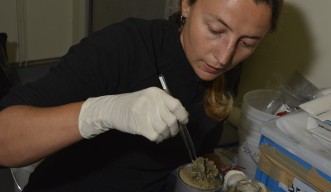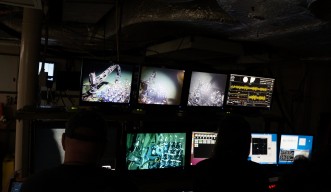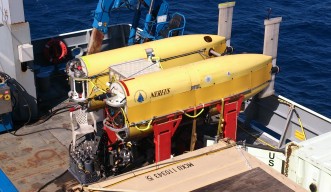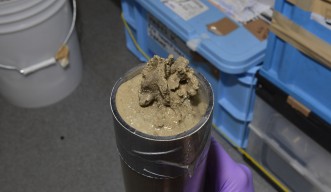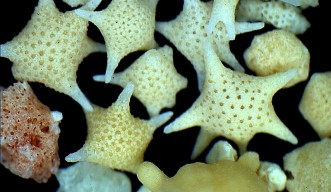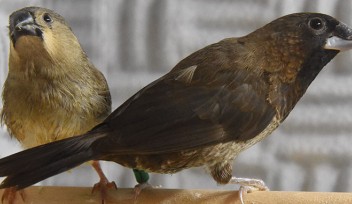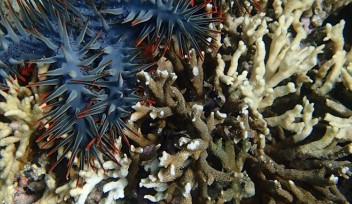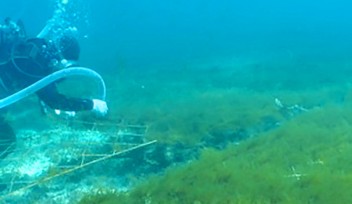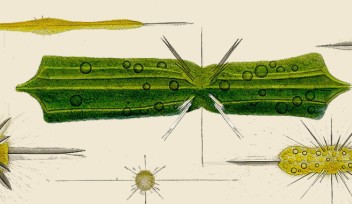Two Leagues Under the Sea
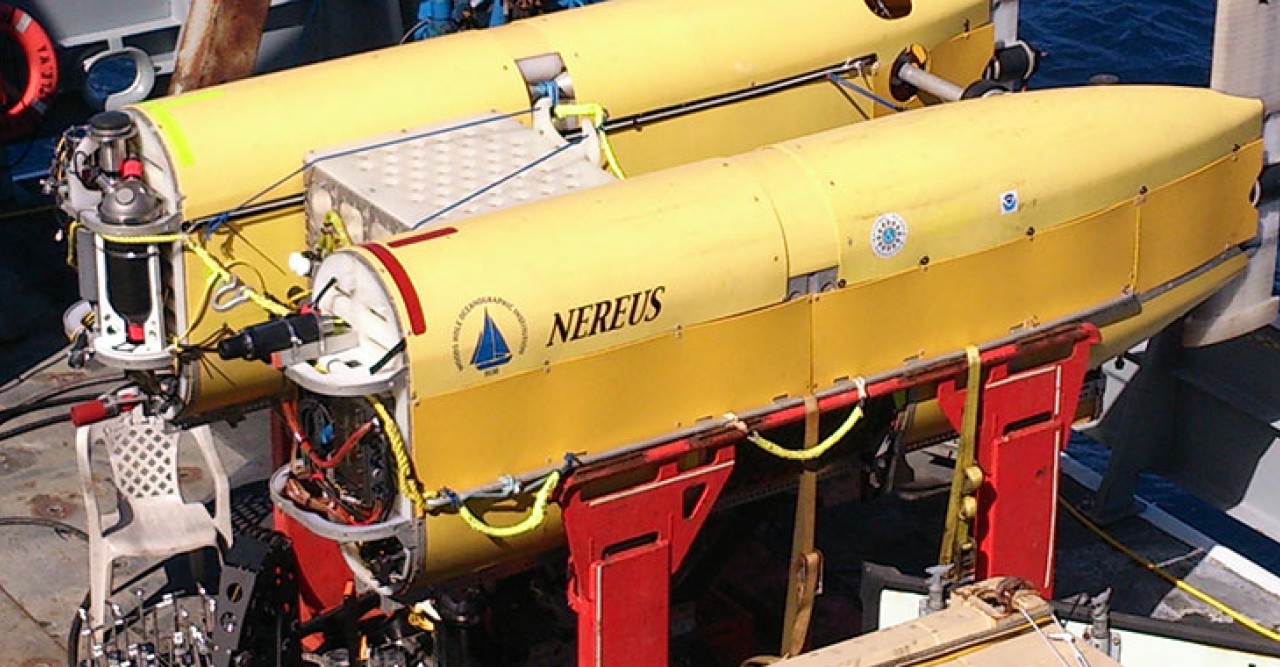
This spring, Okinawa Institute of Science and Technology Graduate University Biodiversity and Biocomplexity Unit researcher Béatrice Lecroq jumped aboard a ship traveling the Pacific. This was no ordinary ship though. It carried dozens of marine scientists and the deepest diver in the world: an unmanned robotic vehicle called Nereus.
The ship journeyed along the Kermadec trench, one of the world’s deepest ocean trenches that stretches from New Zealand to Fiji and Samoa. The ship departed from Auckland, New Zealand and headed for Apia, Samoa. In between, it would travel along the trench, sending Nereus on dives of about eight hours to get close to the bottom of the trench. At the trench’s deepest point, 10,047 meters below sea level, the surrounding pressure reaches more than one thousand atmospheres. Yet the trench is not a barren wasteland; it is filled with motion. “It is surprising how alive it is,” Lecroq said. “Of course there is a kind of lunar feel, from dust that settles to form prints. But you see a lot of things living.”
On each of Nereus’s dives into the trench, it would send back live footage from a high-resolution camera. The researchers would cluster around a group of screens to watch the footage, some of which is detailed enough to rival looking at sediment under a microscope. Specialists controlled Nereus’s position, and dictated when and where it collected samples. Every so often, the researchers would point excitedly and the specialists would direct Nereus to stop and collect sediment or deep-sea life.
Lecroq was specifically searching for foraminifera, an extremely diverse group of one-celled organisms that mostly dwell in sediment. Okinawans might recognize shallow-water foraminifera as the star-shaped sand that fills the beaches on Taketomi Island. However, deep-sea foraminifera look very different. Most foraminifera that scientists see and understand are made of calcium. But under deep-ocean conditions, foraminifera cannot perform calcification, so they have to make their bodies from other materials. Some deep-sea foraminifera can reach twenty centimeters in size, even though they are still just one cell. Foraminifera can look so different that researchers rarely recognize new species by sight. Lecroq says that usually she must sequence the DNA to realize that different foraminifera species are related.
“Nothing is the same at 10,000 meters below the sea,” said Lecroq. “You normally study organisms from this level in okay condition once they have died.” Bringing organisms from the high pressure of the deep to the low pressure at sea level is an extreme shift; most organisms do not survive. Without a deep-sea vehicle, Lecroq would never see deep-sea foraminifera alive, let alone watch the foraminifera in their habitat. This footage is essential for her to understand the environment where the foraminifera live and how they interact with their surroundings.
It may be a long time before Lecroq has the opportunity to see foraminifera in the deep ocean again, because on the final dive of the journey, Nereus vanished. The specialists on board the ship think that it may have imploded due to the extreme pressure. There are other robotic vehicles that dive to the deep ocean, but Nereus was capable of diving the deepest of any in operation. It will take years to engineer and construct another Nereus.
Meanwhile, Lecroq plans to sequence the foraminifera that Nereus collected to learn more about how the group evolved into so many highly specific forms. She sequenced a group of foraminifera in 2011 and found that 90% of the sequences in the study belong to early, ancestral lineages of foraminifera or lineages that had never been studied. “What we previously thought was the breadth of foraminifera diversity was just the tip of the iceberg,” Lecroq explained. “There are way more foraminifera than we ever imagined.”
If foraminifera are any indication of deep-sea diversity, researchers have a lot more collecting to do. Deep-sea organisms may only seem unusual because researchers are more familiar with organisms from sea level, not because they are less common. “The ocean is 70% of the earth’s surface and 95% of it is considered as deep sea,” said Lecroq. “This is the most typical ecosystem of our planet!”
By Poncie Rutsch
Specialty
Research Unit
For press enquiries:
Press Inquiry Form










